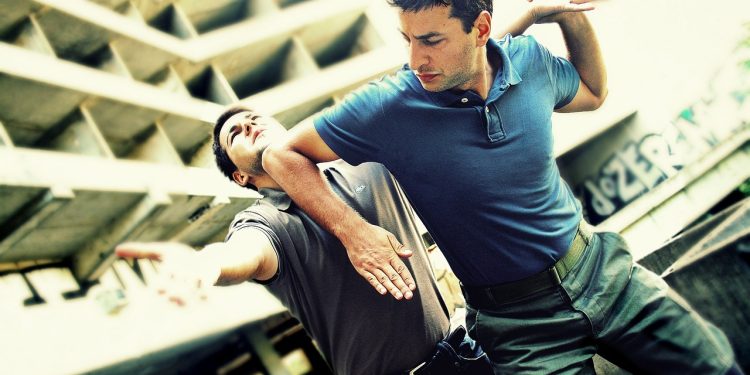In today’s world, personal safety is an important concern for everyone. While we all hope never to find ourselves in dangerous situations, it’s better to be prepared. For men, learning basic self-defense techniques can be empowering, helping build confidence and awareness. Self-defense isn’t about seeking out confrontation, but about having the tools necessary to protect yourself and those around you when there’s no other option. Here are some essential self-defense techniques that every man should know to stay prepared in the face of potential threats.
The Importance of Situational Awareness
Before diving into physical techniques, it’s crucial to understand that awareness is your first line of defense. Situational awareness means being conscious of your environment, knowing who’s around you, and recognizing potential dangers before they become immediate threats. Whether walking down a city street at night or simply in a parking lot, being alert and minimizing distractions (such as using your phone) can make a huge difference.
Prevention is always better than confrontation. By making eye contact, maintaining an assertive posture, and staying aware of your surroundings, you can often dissuade potential attackers who are looking for vulnerable or distracted targets. The key is to trust your instincts. If something feels off, listen to your intuition, and make an effort to move to a safer location.
Basic Stances and Defensive Posture
A proper stance can be the difference between standing your ground or losing balance in a physical altercation. When preparing to defend yourself, stand with your feet shoulder-width apart, one foot slightly in front of the other. Keep your knees slightly bent, your hands up, and your palms open. This stance helps maintain balance and allows you to react quickly, whether to block, dodge, or strike.
Having your hands up in a non-threatening way (palms facing outward) also sends a message to a potential aggressor that you do not want to fight, but you are prepared to defend yourself. A solid defensive posture can make you look less like an easy target and more like someone who is ready to respond effectively.
Effective Strikes: Where and How to Hit
When it comes to self-defense, the goal is not to “fight” but to neutralize the threat quickly so you can escape to safety. Learning where to strike and how to do so effectively can give you an advantage if things escalate. Here are some effective striking techniques every man should know:
- Palm Strikes: Rather than punching with a closed fist, using an open palm to strike an assailant’s nose or jaw can be highly effective. Palm strikes are less likely to injure your own hand while delivering significant force.
- Elbow Strikes: The elbow is one of the strongest points of the human body, making it perfect for close-range attacks. If an assailant is within arm’s reach, use your elbow to strike their head, neck, or ribs. The power behind an elbow strike can stun or incapacitate an attacker long enough for you to make your escape.
- Knees: If an attacker is too close for comfort, using your knees can be a powerful way to defend yourself. Target soft areas like the groin, stomach, or thighs. A well-placed knee to the groin can cause intense pain, giving you the opportunity to get away.
- Kicks: Low kicks aimed at an attacker’s shins, knees, or groin can be effective in disabling them without putting yourself off-balance. Avoid kicking above the waist, as high kicks can be slower and may leave you vulnerable if they are blocked or dodged.
Escaping Grabs and Holds
Attackers often try to restrain their victims before escalating an assault. Knowing how to break free from grabs and holds is crucial in these situations. Here are some basic techniques for escaping common holds:
- Wrist Grab Escape: If someone grabs your wrist, rotate your arm toward the attacker’s thumb—the weakest point of their grip—and pull your arm out forcefully. This quick move can break their grip and give you the chance to counterattack or run away.
- Bear Hug Escape: If an attacker tries to grab you from behind in a bear hug, drop your weight down and try to create space by pushing your hips back. You can also target the attacker’s hands to loosen their grip, then stomp on their feet or use your elbows to strike backward into their stomach or groin.
- Choke Hold Escape: If someone attempts to choke you, the first step is to protect your airway by tucking your chin and turning your head slightly. Use both hands to grab the attacker’s arm and apply pressure to loosen the grip while stepping back to create space. If possible, aim for a strike to the groin or face to weaken their hold.
Blocking and Redirecting Attacks
While striking is one part of self-defense, learning how to block and redirect attacks can also be very effective. If an attacker throws a punch or attempts to grab you, using your forearm to block or redirect their momentum can create an opening for a counterstrike or escape. Always try to stay on the outside of an attacker’s body, which keeps you away from their dominant side and makes it harder for them to follow up with additional strikes.
Practice keeping your hands up and ready to react to any incoming attacks. Blocking is not just about stopping a punch; it’s about deflecting energy so that you maintain balance and control of the situation. A well-placed block can make an attacker hesitate, giving you the chance to move to a safer position.
Using Everyday Objects for Defense
One of the best aspects of self-defense is improvisation. Many everyday objects can be used as tools for protection if you know how to wield them effectively. A pen, for instance, can be used to jab at an attacker, especially if they’re trying to grab you. A bag, umbrella, or even a set of keys can serve as a shield or a striking tool.
The key to using objects for defense is to remain aware of your surroundings and identify anything within reach that could give you an advantage. Even throwing an object at an attacker’s face can serve as a distraction, giving you precious seconds to escape.
De-escalation: The Power of Words
Not all self-defense situations require physical action. In many cases, de-escalation can be the most effective technique. Using a calm, assertive tone and maintaining non-threatening body language can sometimes defuse a potential confrontation before it turns violent. Saying things like “I don’t want any trouble” or “Let’s both just walk away” can signal to an aggressor that you’re not interested in a fight.
Maintaining physical distance and avoiding provocative language are also key parts of de-escalation. The goal is to protect your personal space and create an opportunity for you and the potential aggressor to disengage peacefully.
Practice and Preparedness
Learning self-defense techniques is only effective if you practice them. Muscle memory plays a significant role in how you respond in high-pressure situations, and the only way to develop this memory is through repetition. Consider taking a self-defense class where you can practice techniques in a controlled environment with guidance from trained instructors.
Many martial arts, such as Krav Maga, Brazilian Jiu-Jitsu, or Muay Thai, focus on practical self-defense strategies that are useful in real-life situations. Regular training not only sharpens your skills but also boosts your confidence, which can make you a less appealing target to potential aggressors.
Staying Calm Under Pressure
Perhaps the most important aspect of self-defense is the ability to stay calm under pressure. Panic can lead to poor decision-making, while a clear mind allows you to think strategically and execute the techniques you’ve learned. Breathing deeply and focusing on the actions you need to take can help you remain composed, even in high-stress situations.
Confidence comes from preparation. By understanding basic self-defense techniques, practicing regularly, and staying aware of your surroundings, you’ll be better equipped to handle a variety of situations effectively. Remember, self-defense is about protecting yourself, not about showing aggression or seeking out confrontation. The ultimate goal is to stay safe and avoid conflict whenever possible.






